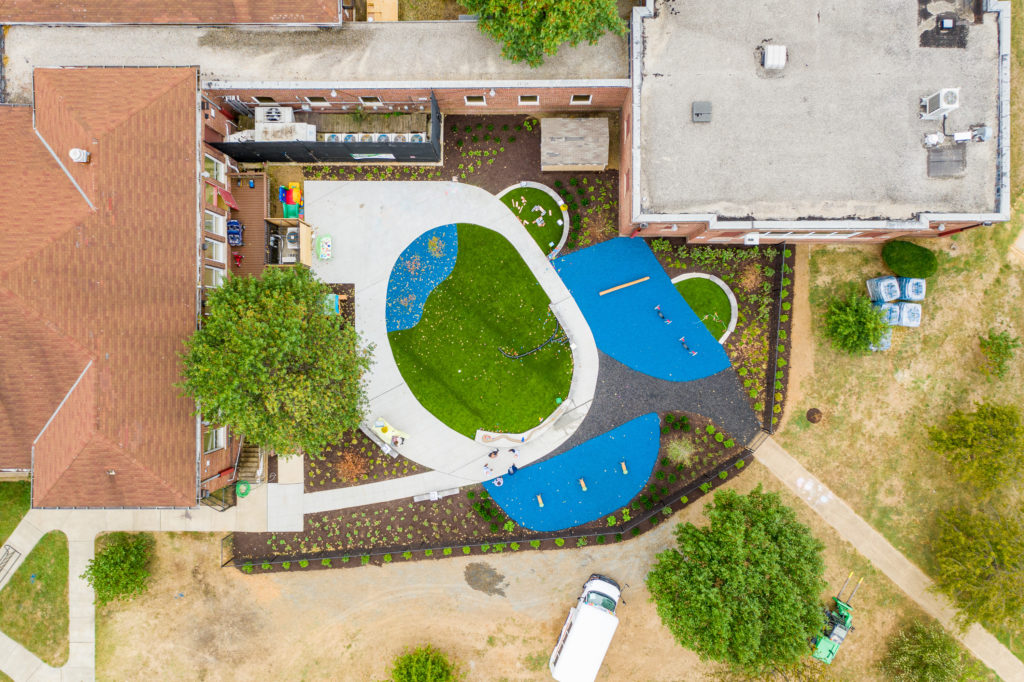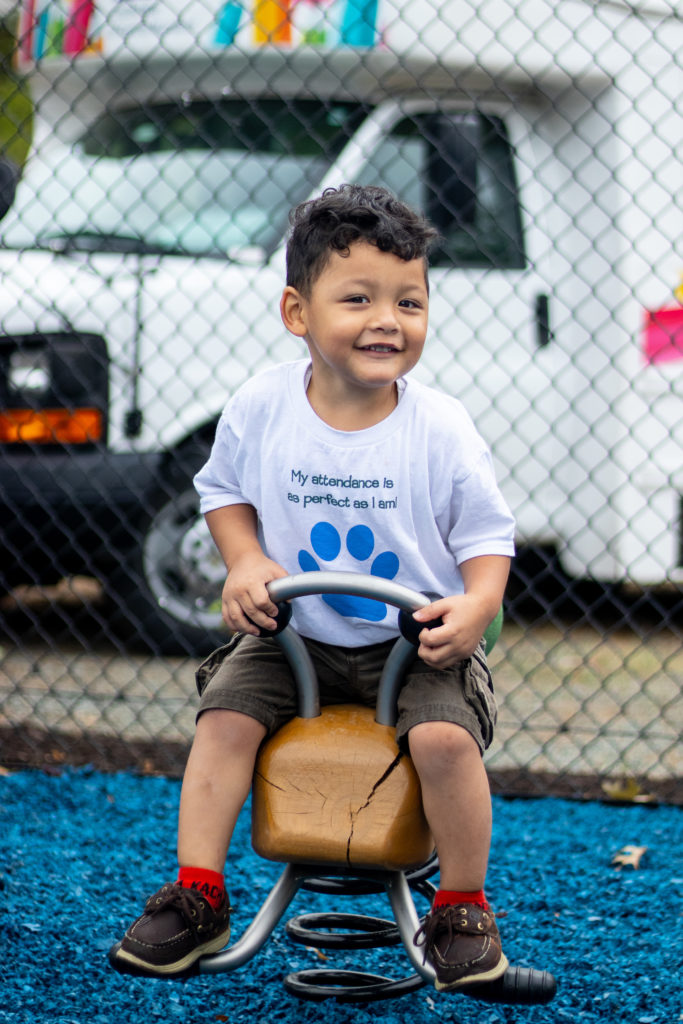
When Steve Budorick of Corporate Office Properties Trust
(COPT) toured the outdoor area surrounding Benjamin Franklin High School in
Brooklyn, he immediately realized that the environment was not conducive to positive
advancement and was in large part unusable and unsafe.
Upon learning more about the composition of students at the
school and the challenging situation they face on a daily basis, the COPT President and Chief
Executive Officer decided to seize the opportunity. He spearheaded a
comprehensive transformation of the grounds that serves many audiences. Ten
months later, with the support of other partners, the goal was accomplished.
The story begins several years earlier when the United Way
of Central Maryland partnered with the high school to create The Ben Franklin
Center for Community Schools (commonly referred to as the Ben Center), a
community-involvement initiative that also integrated an early childhood
development program for teen-aged students caring for infants and toddlers. Budorick
became involved based upon his capacity as a recent United Way Campaign Chair.
On his initial tour, Budorick learned of the early morning
patrols required by faculty to clear away needles, bottles and broken glass
that found their way onto the grounds on a nightly basis, and made the outdoor
area unsafe to access the next morning.
The play equipment was sparse, in poor condition and would often
disappear.
COPT immediately assembled a professional team comprised of
trusted vendors to tackle the assignment on a pro bono basis, including
BrightView Landscapes, Country Springs Nursery, Floura Teeter Landscape
Architects and NAIOP-MD member Plano-Coudon Construction.
 A needs assessment exercise uncovered the need for an outdoor area for young mothers to spend quality time with their children, spaces for school faculty to unwind from daily pressures, and the installation of interactive playground equipment and features where children could play freely and use their imagination.
A needs assessment exercise uncovered the need for an outdoor area for young mothers to spend quality time with their children, spaces for school faculty to unwind from daily pressures, and the installation of interactive playground equipment and features where children could play freely and use their imagination.
“It was important to align ourselves with partners that
shared similar values of community involvement and giving back, as well as
demonstrated the ability to perform excellent work,” said Tom Kelley, Director
of Development + Design for COPT. “Everyone rallied around this project. The
result was a beautifully imagined and curated outdoor area that provides areas
of reflection and connection for different audiences. It is inspiring to watch
the interaction of the mothers with their young children and know that we were
the driving force behind the entire project. We encourage other local companies
to seek opportunities to make a difference in their community.”
With design inspiration from Floura Teeter, the program was
highlighted by the installation of an open lawn area utilizing artificial turf
that replicated the look and feel of real grass. The grounds were punctuated
with natural play areas integrating gardens and plants to encourage users to
interact with nature and get their hands dirty. A water feature was installed
to encourage aquatic play, a sensation that might be unique for this young
audience. The playground equipment included wooden snails that swing back and
forth, as well as smaller swings for toddlers. The presence of balance beams
enable users to physically challenge themselves, and the circular path around
the entire area allows for youngster to climb aboard bicycles, expend energy
and explore.
“Responding to input, it was important for this area to
function during all four seasons, not just during months with temperate
weather,” said Alice Storm Jones, Senior Associate, Landscape Architect at
Floura Teeter who, as a Certified Playground Safety Inspector, is credited with
educating the team about important elements and processes involved in the
project. This includes creating various spaces and areas to read a book, enjoy
lunch or reflect.
“The design encouraged the testing of boundaries by the
young people, based on the creation of wide open spaces with minimal
interference and obstruction,” Storm Jones added. “This is an important trait to discover in an
individual’s development and, upon conclusion of this exploration, the young
person always finds their way back to the presence of a teacher or parent. I
think everyone learned a great deal about the situation these students and
children face, as well as themselves.”